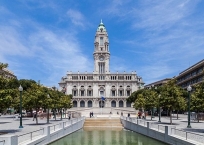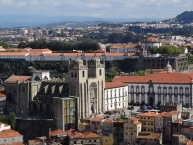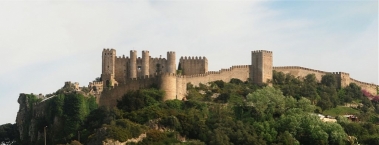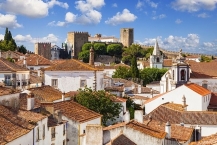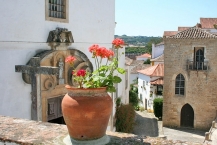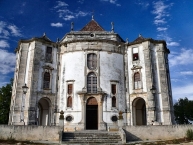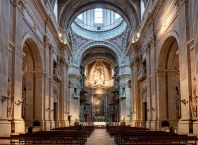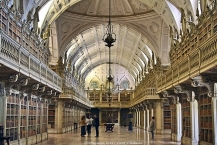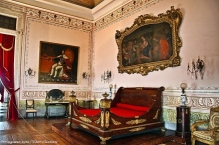Cycle Tour Atlantikküste
Travel report: Auszeit 2022
Actions
![]()
Please wait - map data are loading
Added on 17 May 2023,
last edited by Jenser on 17 May 2023
Actions
Cycle route metrics
planned
ridden
Total distance in km
5.185
0
Cumulative elevation gain in m
48.149
0
Avg. slope uphill in %
0,93
-
Cumulative elevation loss in m
48.116
0
Information about rights to the gps-track data | |
|---|---|
Rights owner | |
Rights characteristic / license | by-sa: CREATIVE COMMONS Attribution-ShareAlike |
Link to the description of the license | |
GPX file uploaded | by Jenser on 17 May 2023
|
Track points in total
29.290
0
Track points per km (avg)
6
0
Start/endpoint
Start location
Matosinhos, PT (14 m NHN)
End location
Buchholz in der Nordheide, NI, DE (48 m NHN)
Character
Fantastische Radtour, am 11. April 2022 in Porto gestartet. Portugal und Frankreich waren absolut fantastisch - sehr empfehlenswert! Speziell in Frankreich ist die Infrastruktur perfekt, Campingplätze super und sauber, die Menschen sehr nett. Das sogar ohne französische Sprachkenntnisse. Spanien war mangels Unterkünfte und schlechter Wegebeschaffenheit leider nicht mit dem Fahrrad befahrbar, das Land habe ich überwiegend mit einem Mietwagen befahren, das Fahrrad und Ausrüstung passen gerade so hinein:-)
Mit einigen Pausen war ich gute zwei Monate unterwegs.
Information about copyright | |
|---|---|
Rights characteristic / license | by-sa: CREATIVE COMMONS Attribution-ShareAlike |
Link to the description of the license | |
taken over / edited on | 17 May 2023
|
taken over / edited by |
|
Travel to and from ...
Flug von Hamburg nach Porto
Sources of information
https://de.eurovelo.com/ev1
https://de.eurovelo.com/ev4
https://de.eurovelo.com/ev12
Beds4Cyclists, worth visiting and infrastructure
Name and address
Latitude / Longitude
Phone
Fax
Mobile
Type of accommodation
Rating for cyclists
Route km
Dist. to route
Elevation
15 km
0,2 km
69 m
Information about copyright | |
|---|---|
Rights owner | |
Rights characteristic / license | by-sa: CREATIVE COMMONS Attribution-ShareAlike |
Link to the description of the license | |
Image taken over from | https://commons.wikimedia.org/wiki/File:Porto3flat-cc-contr-oliv1002_edit2.jpg |
Image has been uploaded | by biroto-Redaktion on 20 Aug 2016
|
Information about copyright | |
|---|---|
Rights owner | |
Rights characteristic / license | by-sa: CREATIVE COMMONS Attribution-ShareAlike |
Link to the description of the license | |
Image taken over from | https://commons.wikimedia.org/wiki/File:Ayuntamiento_de_Oporto,_Portugal,_2012-05-09,_DD_03.JPG |
Image has been uploaded | by biroto-Redaktion on 20 Aug 2016
|
Information about copyright | |
|---|---|
Rights owner | |
Rights characteristic / license | by-sa: CREATIVE COMMONS Attribution-ShareAlike |
Link to the description of the license | |
Image taken over from | |
Image has been uploaded | by biroto-Redaktion on 20 Aug 2016
|
Information about copyright | |
|---|---|
Rights owner | https://commons.wikimedia.org/w/index.php?title=User:Cristina_sousa |
Rights characteristic / license | by-sa: CREATIVE COMMONS Attribution-ShareAlike |
Link to the description of the license | |
Image taken over from | https://commons.wikimedia.org/wiki/File:Catedral_do_Porto_-_Sé.jpg |
Image has been uploaded | by biroto-Redaktion on 20 Aug 2016
|
Porto is Portugal's second largest city and the capital of the Northern region, and a busy industrial and commercial center. The city itself isn't very populous (about 240,000 inhabitants), but the Porto metropolitan area has some 1,500,000 inhabitants in a 50 km radius.
The city was built along the hills overlooking the Douro river estuary, and its historical center was awarded World Heritage status by UNESCO in 1996. It has been continuously inhabited since at least the 4th Century, when the Romans referred to it as Portus Calle, which is the origin of the entire country's name.
Understand
History
The city is officially styled "a muito nobre, sempre leal e invicta cidade do Porto" (the very noble, always faithful, and invincible city of Porto). This is usually shortened to "a Cidade Invicta" (the invincible city) a title won because of Porto's unparalleled resistance against Napoleonic troops during the Peninsular war. Residents of Porto are nicknamed the Tripeiros, or tripe eaters. This is based on the legend of the city's inhabitants going without meat in order to provision the fleet (which left from Porto) that left to conquer Ceuta in North Africa in 1415. As the story goes, they had to subsist on tripe soup, which is a specialty of the city.
The city is quite varied architecturally, with medieval as well as modern living side by side. Porto's geography is hard on the feet, but pleasant to the eye. The city is extremely hilly, with many buildings built into a cliff face that overlooks the river. Stairs cut into the stone run up and down the cliff face and offer a laborious but rewarding walking tour. Across the river from Porto proper, in the suburb of Gaia, are located the warehouses of notable Porto wine companies, such as Cálem, Ferreira, Fonseca, Sandeman, Kopke and others.
People
Citizens of Porto, while definitely Portuguese, hold themselves apart culturally from the rest of the country, as is expressed in the often heard phrase "o Porto é uma nação" (Porto is a nation). Outsiders often consider Porto to be more crass and mercantile than the rest of the country, and the inhabitants to be somewhat lacking in social graces. This is likely because the city has historically been dominated by Portuguese bourgeoisie and English trading factions rather than the nobility. The Portuenses, to use the correct term for the inhabitants, of course disagree, regarding themselves with some justification as being the economic heart of the nation. As the saying goes, "Porto works, Braga Prays, Coimbra studies, and Lisbon gets the money."
While the local attitude is friendly, to outsiders it is worth noting that locals can respond literally to questions, which may seem slightly off-putting to the uninitiated. An example of this would be to ask in a bar if they have a menu (for food) and to receive a straight 'no' as a response. It's after further questions that one can find out that the establishment doesn't sell food. Such a response is not considered rude, it is merely direct and literal.
If you speak in Spanish to a local, you will be largely understood and as a rule they will freely converse with you, but from time to time, more so with the older generation, you may be politely reminded that you are in Portugal and the native language is Portuguese.
See
Porto is a mysterious city that reveals its charm to the visitor through time. Take your time, wander through the mazes and alleys of the city. Take in the old, bohemian spirit of the city. Hike through the Ribeira and Foz do Douro regions (the latter, at sunset). Porto may not be in every tourist's Iberian Peninsula itinerary, but it's well worth a visit if you want to see a city that has changed economically, but that has kept its old traditions, something that is being forgotten in Europe today.
If you want to visit several museums, consider the Porto Card which provides free access to several museums and further discounts, optionally also free public transport access.
City centre
- Palácio da Bolsa (Stock Exchange Palace), Rua Ferreira Borges, 4050-253. It also contains the most impressive Arab room in the country. There is also a Port wine tasting room. It was built in the 19th century on the grounds of the destroyed old cloisters of the adjacent São Francisco church. €7.50 adults, €4 concessions.
- Sé do Porto (Porto Cathedral), Terreiro da Sé, 4050-573. This Romanesque cathedral was originally completed in the 13th century. Later on Baroque alterations were made in the 17th and 18th century. The cathedral is located on top of a hill from where you also have great views over the city and the river. Free. Adjacent monastery €4.
- Port Wine Institute, Rua Ferreira Borges 27, 4050-253, ☎ +351 222 071669. Mon-Fri 11:00-19:00, Sat-Sun closed. A small exhibition about Port wine and it's certification process. Samples of a small variety of Port wines can be bought. Guided tastings and tours to the laboratories can be arranged. Free.
- City Hall, Avenida dos Aliados.
- Igreja de São Francisco (Church of Saint Francis) (adjacent to Palácio da Bolsa). A Gothic church with later alterations of the interior decorations in Baroque style.
Baixa (downtown)
- ⊙Mercado do Bolhão, Rua Formosa. Sun closed. A traditional market of fruits, vegetables, fish and meat.
West Baixa
- ⊙Livraria Lello, Rua das Carmelitas (Near Praça dos Leões and the Universidade do Porto). It's an old bookshop with an amazing interior and spiral staircase, where you can also have a coffee or glass of port. Voted as one of the most beautiful bookshops in Europe. To get in you have to buy a €3 voucher at the kiosk opposite the entrance, which can be used towards book purchases.
- Torre dos Clérigos (Clerics' Tower), Rua São Filipe Nery, 4050-546, ☎ +351 222 001729. Panoramic views from this baroque tower. 240 steps to the top. It is best to get there early since there is not a lot of space on the viewing platform. You might even have to wait for some time before you are allowed to climb up the stairs. €3 (includes entry to a small exhibition at the lower levels of the tower).
- ⊙National Museum Soares dos Reis, Palácio dos Carrancas, Rua D. Manuel II, 4050-342. Museum displaying Portuguese art. Founded in 1833.
- ⊙Centro Português de Fotografia (Portuguese Photography Museum), Edifício da Ex-Cadeia e Tribunal da Relação do Porto, Largo Amor de Perdição, 4050-008. Housed in a beautiful building in the centre of the city. Free.
São Nicolau
South city center
- ⊙Ribeira (Riverfront). The part of the city near the river, which is also a good place to start visiting the World Heritage area; to the other side of the river you will see the Ribeira de Gaia, a similar area from the city of Vila Nova de Gaia
 (the two are only separated by the river) and where you could find the Port Wine Cellars.
(the two are only separated by the river) and where you could find the Port Wine Cellars. - ⊙ , Largo Dr. Pedro Vitorino 2, 4050-468 (Located in the Church of St. Lawrence (known as the Cricket Church (Igreja Grilo) after the nickname of the religious order that took ownership in 1780). Beginning at the riverfront, head north on R de Mercadores and look for the Igreja Grilo signs directing you into the delightfully narrow streets that lead to the church. Best approached on foot.), ☎ +351 223 395020.
- The 6 bridges connecting Porto to Gaia over the Douro river, many of them providing an excellent view to the river.
West of city center
- ⊙Museu do Vinho do Porto (Port Wine Museum), Rua de Monchique 45-52, 4050-394.
- ⊙Pavilhão Rosa Mota. A multi purpose pavilion with nice gardens to rest, also known as "Palácio de Cristal". (updated Sep 2015)
- ⊙Museu Romântico (nearby the Pavilhão Rosa Mota). A house where the king of Italy stayed while on exile.
Boavista
North-west of city center
- ⊙Casa da Música (House of Music), Avenida da Boavista 604-610, 4149-071 (Take the metro lines A, B, C, E or F and get off at "Casa da Música"), Box office ☎ +351 220 120220, tour enquiries ☎ +351 220 120210. Designed by Rem Koolhaas and OMA. Guided tour available in English at 11:00, 16:00 and 17:00 for €6/person (free for children under 12) which take about 1 hour.
- ⊙Fundação de Serralves (Modern Art Museum), Rua D. João de Castro 210, 4150-417 (Take bus 201 (from 06:00-21:00) Sá da Bandeira -> Viso, bus 203 (from 06:00-21:00) Marquês -> Castelo do Queijo, bus 502 (from 06:00-01:00) Bolhão -> Matosinhos Mercado, or bus 504 (from 06:00-00:45) Boavista -> Norteshopping). A contemporary museum designed by the famous architect Álvaro Siza, with a huge garden/park and an Art Deco Villa. When visiting this foundation you can visit the exhibitions, relax at the park, have lunch at the restaurant, bar or tea house and explore the shops or the library. There is also a farm at the southern end of the park. €8.50 museum and park, €4 park only. 50% discount for 65+ and Porto card holders. Free on Sundays 10:00-13:00 for students and under 18.
Foz do Douro
This is the area around the ocean front just north of the mouth of the Douro River. You can rent a bike and cycle along the riverfront and then the beach to that area.
- ⊙Castelo Do Queijo (At the western end of Avenida da Boavista).
Information about copyright | |
|---|---|
Rights characteristic / license | by-sa: CREATIVE COMMONS Attribution-ShareAlike |
Link to the description of the license | |
Input taken over from: |
Wikivoyage contributors, 'Porto', Wikivoyage, The FREE worldwide travel guide that anyone can edit, 12 August 2016, 23:33 UTC, https://en.wikivoyage.org/w/index.php?title=Porto&oldid=3033010 |
taken over / edited on | 20 Aug 2016 - 16 Mar 2021
|
taken over / edited by |
|
15 km
0,6 km
85 m
15 km
0,7 km
67 m
312 km
0,4 km
62 m
Information about copyright | |
|---|---|
Rights owner | |
Rights characteristic / license | by-sa: CREATIVE COMMONS Attribution-ShareAlike |
Link to the description of the license | |
Image taken over from | https://commons.wikimedia.org/wiki/File:Obidos_April_2009-4b.jpg |
Image has been uploaded | by biroto-Redaktion on 08 Feb 2021
|
Information about copyright | |
|---|---|
Rights owner | |
Rights characteristic / license | by-sa: CREATIVE COMMONS Attribution-ShareAlike |
Link to the description of the license | |
Image taken over from | |
Image has been uploaded | by biroto-Redaktion on 08 Feb 2021
|
Information about copyright | |
|---|---|
Rights owner | https://commons.wikimedia.org/w/index.php?title=User:Alegna13 |
Rights characteristic / license | by-sa: CREATIVE COMMONS Attribution-ShareAlike |
Link to the description of the license | |
Image taken over from | https://commons.wikimedia.org/wiki/File:Detalhes_Vila_de_Óbidos_1.jpg |
Image has been uploaded | by biroto-Redaktion on 08 Feb 2021
|
Information about copyright | |
|---|---|
Rights owner | |
Rights characteristic / license | by-sa: CREATIVE COMMONS Attribution-ShareAlike |
Link to the description of the license | |
Image taken over from | https://commons.wikimedia.org/wiki/File:Santuario_do_Senhor_Jesus_da_Pedra_(2812887873).jpg |
Image has been uploaded | by biroto-Redaktion on 08 Feb 2021
|
Óbidos is a village in the Oeste subregion of Central Portugal. The town is a popular destination due to its walled hilltop medieval centre.
Understand
In recognition of its literary connections, UNESCO (United Nations Educational, Scientific and Cultural Organization) added Óbidos to its Creative Cities Network in 2015.
See
- ⊙Castelo de Óbidos (Óbidos Castle), Rua Josefa de Óbidos. The village is dominated by an old medieval castle with a portion of the village located within the fortress walls.
- ⊙Igreja de Santa Maria (Church of St. Mary), Praça de Santa Maria, ☎ +351 262 959633. The mother church/main church of Óbidos. In Moorish times, this was a mosque. After the Christian reconquest in 1148, it was dedicated as a Catholic church. Much renovation occurred in the 16th century, when the bell tower was added.
(updated Jan 2021)
- ⊙Museu Municipal de Óbidos (Municipal Museum), Rua Direita 97 (in the old Council Chamber House), ☎ +351 262 955557. Tu–Su 10:00–13:00 & 14:00–17:00, closed M. The museum covers the town's art and religious devotion. It features paintings from the 16th and 17th centuries, particularly by André Reinoso and Josefa d’Óbidos. (updated Jan 2021)
- ⊙Porta da Vila (Porta da Senhora da Piedade), Rua Josefa de Óbidos 2. The entryway into the town's medieval walls takes you through a tiled portico. On a balcony above, here's a baroque chapel-oratory dedicated to Our Lady of Mercy, the town's patron saint (a/k/a Mary, the mother of Jesus).
- ⊙Óbidos Aqueduct (Aqueduto de Óbidos). The Óbidos Aqueduct is a 16th-century aqueduct that spans the municipality.
- ⊙Santuário do Senhor Jesus da Pedra, Largo do Santuário (N8 road NE of Óbidos town). This sanctuary, inaugurated in 1747, is one of Portugal's main baroque monuments. Its unusual hexagonal shape is surprising.
Do
- Walk the 1.5 km (0.93 mi) walls of the fortress.
Information about copyright | |
|---|---|
Rights characteristic / license | by-sa: CREATIVE COMMONS Attribution-ShareAlike |
Link to the description of the license | |
Input taken over from: |
Wikivoyage contributors, 'Óbidos', Wikivoyage, The FREE worldwide travel guide that anyone can edit, 28 January 2021, 09:21 UTC, https://en.wikivoyage.org/w/index.php?title=%C3%93bidos&oldid=4140754 [accessed 8 February 2021] |
taken over / edited on | 08 Feb 2021
|
taken over / edited by |
|
376 km
4,5 km
219 m
Information about copyright | |
|---|---|
Rights owner | |
Rights characteristic / license | by-sa: CREATIVE COMMONS Attribution-ShareAlike |
Link to the description of the license | |
Image taken over from | |
Image has been uploaded | by biroto-Redaktion on 10 Feb 2021
|
Information about copyright | |
|---|---|
Rights owner | |
Rights characteristic / license | by: CREATIVE COMMONS Attribution |
Link to the description of the license | |
Image taken over from | https://commons.wikimedia.org/wiki/File:22340-Mafra_(49043387738).jpg |
Image has been uploaded | by biroto-Redaktion on 10 Feb 2021
|
Information about copyright | |
|---|---|
Rights owner | |
Rights characteristic / license | by-sa: CREATIVE COMMONS Attribution-ShareAlike |
Link to the description of the license | |
Image taken over from | |
Image has been uploaded | by biroto-Redaktion on 10 Feb 2021
|
Information about copyright | |
|---|---|
Rights owner | |
Rights characteristic / license | by-sa: CREATIVE COMMONS Attribution-ShareAlike |
Link to the description of the license | |
Image taken over from | https://commons.wikimedia.org/wiki/File:Palácio_Nacional_de_Mafra_-_Portugal_(28470989227).jpg |
Image has been uploaded | by biroto-Redaktion on 11 Feb 2021
|
The Palace of Mafra (Portuguese: Palácio de Mafra), also known as the Palace-Convent of Mafra and the Royal Building of Mafra (Real Edifício de Mafra), is a monumental Baroque and Neoclassical palace-monastery located in Mafra , Portugal, some 28 kilometres from Lisbon
. Construction began in 1717 under King John V of Portugal and was completely concluded in 1755.
The palace was classified as a National Monument in 1910 and was also a finalist in the Seven Wonders of Portugal . On 7 July 2019, the Royal Building of Mafra – Palace, Basilica, Convent, Cerco Garden and Hunting Park (Tapada) was inscribed as a UNESCO World Heritage Site.
History
The palace, which also served as a Franciscan friary, was built during the reign of King John V (1707–1750), as consequence of a vow the king made in 1711, to build a convent if his wife, Queen Mariana, gave him offspring. The birth of his first daughter the Infanta Barbara of Portugal, prompted construction of the palace to begin. The palace was conveniently located near royal hunting preserves, and was usually a secondary residence for the royal family.
The construction was funded from the proceeds of slave labour in Brazil, mining gold and then diamonds in vast quantities.
This vast complex, largely built of Lioz stone, is among the most sumptuous Baroque buildings in Portugal and at 40,000 m², one of the largest royal palaces. Designed by the German architect João Frederico Ludovice, the palace was built symmetrically from a central axis, occupied by the basilica, and continues lengthwise through the main façade until two major towers. The structures of the convent are located behind the main façade. The building also includes a major library, with about 30,000 rare books. The basilica is decorated with several Italian statues and includes six historical pipe organs and two carillons, composed of 98 bells.
Information about copyright | |
|---|---|
Rights characteristic / license | by-sa: CREATIVE COMMONS Attribution-ShareAlike |
Link to the description of the license | |
Input taken over from: |
Wikipedia contributors, 'Palace of Mafra', Wikipedia, The Free Encyclopedia, 29 December 2020, 19:48 UTC, https://en.wikipedia.org/w/index.php?title=Palace_of_Mafra&oldid=997049841 [accessed 10 February 2021] |
taken over / edited on | 10 Feb 2021
|
taken over / edited by |
|
Hours of opening
Palace: 09h30/17h00 (last admission 16h30)
Basilica: Everyday form 09.30h to 17h00
Library (readers, by previous appointment): Monday, Wednesday, Thursday and Friday 09h30/12h30 - 14.00h/16.00h
![]()


